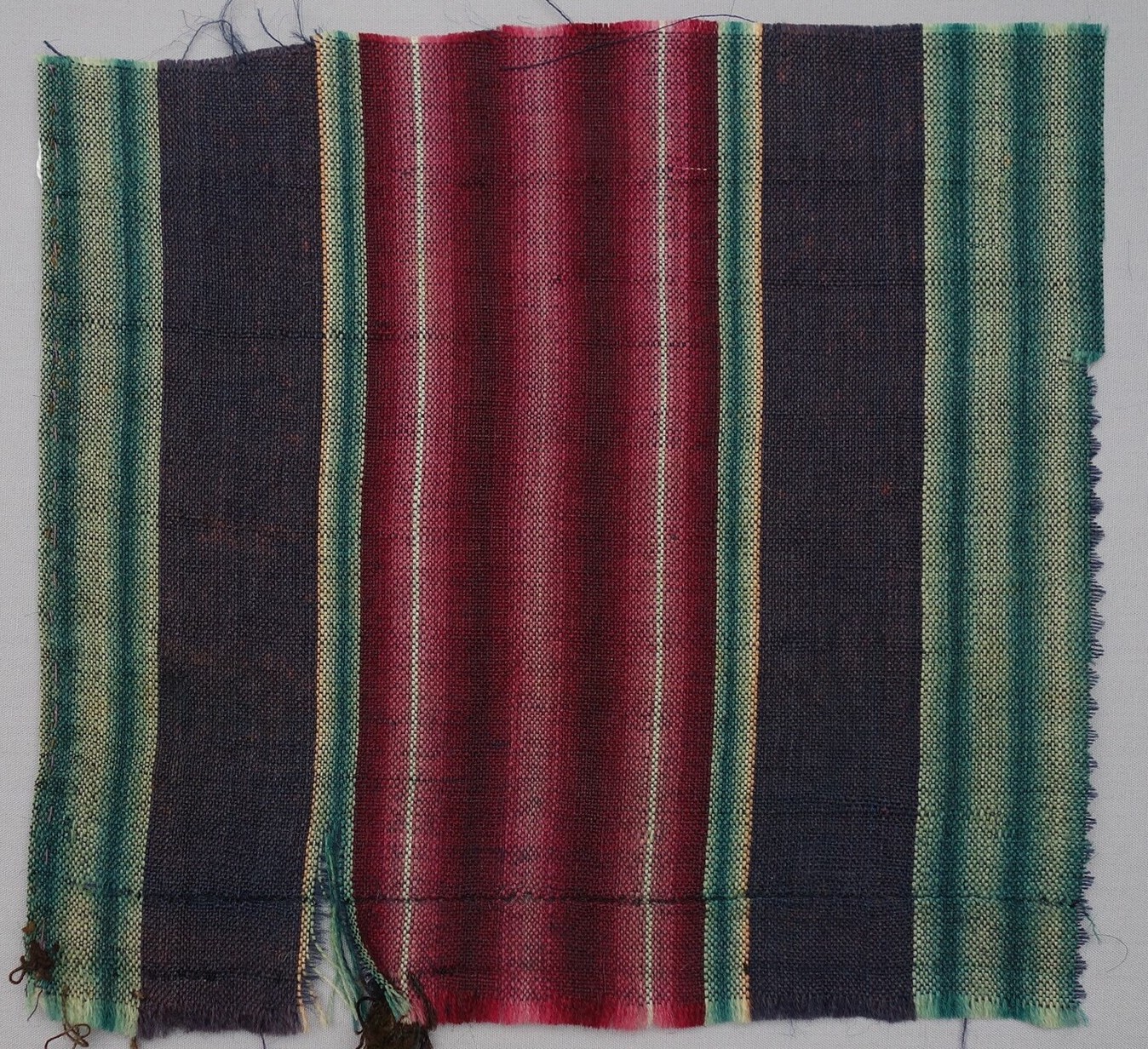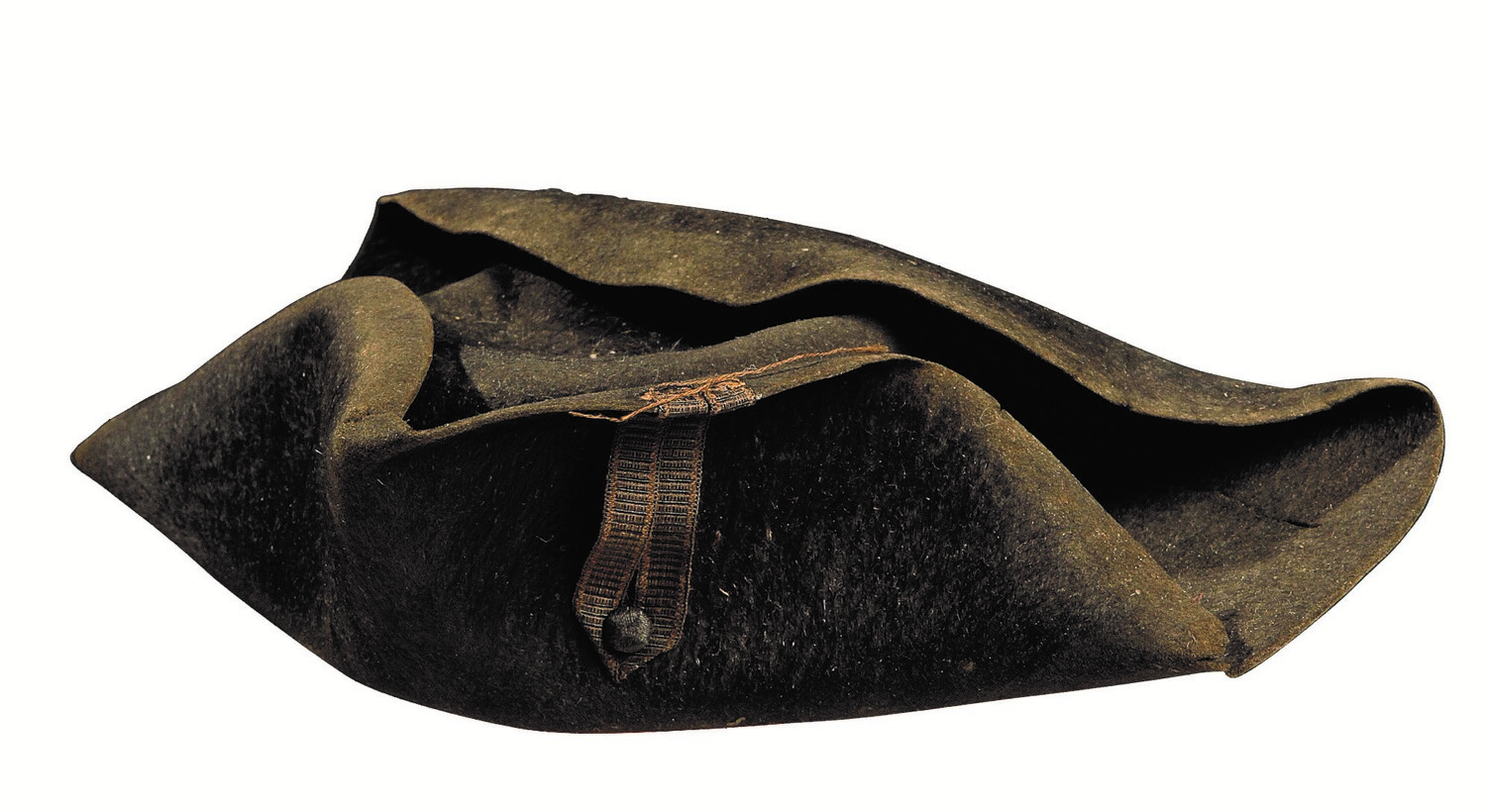 The Lodewijkskerk in Leiden used to be the centre ('saai-hal') for the trade in saai cloth.The historic city of Leiden has long been known for the production of various types of woollen and worsted textiles, including laken (broadcloth), baai (baize), saai (combed wool), satin, grein (goat or sheep's hair/wool worsted cloth) and serge (twill), as well as soft fluffy blankets (deken).
The Lodewijkskerk in Leiden used to be the centre ('saai-hal') for the trade in saai cloth.The historic city of Leiden has long been known for the production of various types of woollen and worsted textiles, including laken (broadcloth), baai (baize), saai (combed wool), satin, grein (goat or sheep's hair/wool worsted cloth) and serge (twill), as well as soft fluffy blankets (deken).
Not so surprising therefore that the TRC in Leiden is actively working with Dutch textile and costume historian Jankees Goud (Atelier Dracht), Frank Gardiner (Amsterdam) and others to expand its reference collection of textiles that reflects these technical types and forms (always of interest to the TRC) and the textile history of Leiden in general.
This reference collection will eventually cover the wide range of textile types (woven, printed, embroidered, laces, etc) associated with Dutch regional dress. It will also 'underpin' a TRC research project into the Leiden textile production throughout the centuries, with a special emphasis on technical aspects, such as the fibres, their spin, the weaving, the dyes, further processing, etc.
 Gable stone in Leiden, dated 1638, depicting a man working (dyeing or washing?) blue dyed cloth.
Gable stone in Leiden, dated 1638, depicting a man working (dyeing or washing?) blue dyed cloth.
We are therefore pleased to announce that a group of relevant textiles has been received just a few days ago and put online. It includes pieces of serge (TRC 2021.3324) and of red baai (TRC 2021.3322), which was especially popular with Dutch fishermen and was regarded as being medicinal in nature - it was seen as being good against rheumatism.
But perhaps some of the most intriguing items we just received are three examples of grein (TRC 2021.3327, TRC 2021.3328 and TRC 2021.3329), which are hand woven and appear to be 18th century in date. Grein is a type of worsted cloth that was decorated in various manners, including with floral motifs and in particular with colourful stripes.
![Lead cloth seal, 17th century, with the text: LEY[DE]N SAT/TYNNE ('Leiden satin') (TRC 2016.0092).](/trc/images/2016.0092.JPG)
The question at the moment is - are these three pieces Dutch or English in origin? And was this type of textile introduced in Norfolk by weavers from Holland, or vice versa? More to come following further research. These textiles will also form the basis of a mini-exhibition in 2022.

Recently the TRC was also given two examples of 'real' woollen blankets made by the Leiden blanket company of Van Wijk (TRC 2021.1344 and TRC 2021.2915).
I should also add that we have a collection of wooden forms for stockings and socks used by the company of P. en J. van Poot en Co., Leidsche Breifabriek, Leiden. The company was set up in 1870 and closed down in 2002.

We have examples of garments, for instance, made in the late 18th century for Leiden people, such as two calico dresses and jackets, as well as numerous early 20th garments (such as TRC 2007.0733 and TRC 2007.0731a), all of which were made for and worn by various ladies of the Van Enter-Westerman Holstijn family, who lived along the stately Rapenburg canal, the most prestigious part of the old city.
We also have a miniature hat (TRC 2010.0056a) made by Hendrik Visser, for his journeyman’s guild exam in December 1796. The Visser family were hat-makers in Leiden for over 200 years and provided hats, for example, for the children in the city’s main orphanage. Their hat shop was destroyed in 1929 in a massive fire that destroyed much of Leiden’s city hall, their immediate neighbours.
 Journeyman's exam piece made in 1796 by a Leiden hatmaker (TRC 2010.0056a). The TRC also has the original document testifying to the qualifications of the hatmaker (TRC 2010.0056b).Recently we presented an exhibition of the history of the Second World War, using many items of clothing worn by Leiden men and women (such as TRC 2019.2154). Compare also the TRC online exhibition: Textile Tales from the Second World War.
Journeyman's exam piece made in 1796 by a Leiden hatmaker (TRC 2010.0056a). The TRC also has the original document testifying to the qualifications of the hatmaker (TRC 2010.0056b).Recently we presented an exhibition of the history of the Second World War, using many items of clothing worn by Leiden men and women (such as TRC 2019.2154). Compare also the TRC online exhibition: Textile Tales from the Second World War.
The TRC Collection also includes various outfits reflecting different aspects of Leiden professional life, such as the uniform (TRC 2007.1145) worn by Paul van Musscher, Commissioner of the Leiden police; and the outfit (TRC 2007.0275a-b) worn by the first imam in the Turkish mosque in Leiden (also the first mosque in Leiden).
And indeed, we also have a woman’s outfit for the 3rd October asssociation that organises the celebrations associated with the lifting of the Spanish siege of the city in 1574 (TRC 2016.2040a-e).
 Head covering of the first imam of the first (Turkish) mosque in Leiden, 1970s (TRC 2007.0275b).There are also lace caps worn by women from Leiden and the surrounding Rijnland, such as TRC 2021.2445, and photographs of women wearing such caps taken by Leiden photographers (TRC 2021.2439dd). We recently published a series of blogs on Rijnland lace.
Head covering of the first imam of the first (Turkish) mosque in Leiden, 1970s (TRC 2007.0275b).There are also lace caps worn by women from Leiden and the surrounding Rijnland, such as TRC 2021.2445, and photographs of women wearing such caps taken by Leiden photographers (TRC 2021.2439dd). We recently published a series of blogs on Rijnland lace.
Furthermore, we should not forget a number of men's ties, such as one linked with the Leiden University Medical Centre (TRC 2021.3334), and two ties recently given to the TRC by Henry Lenferink, the mayor of Leiden (TRC 2019.1773 and 2019.1774), showing the crossed keys of the Leiden coat of arms.
If you have any textiles or garments that were made in Leiden, or perhaps sample books, letters, books, photographs, etc., that you are willing to donate to the TRC please let me know at This email address is being protected from spambots. You need JavaScript enabled to view it..
In future blogs we will tell more about our continuing study of Leiden and Leiden-related textiles and their fascinating history.
Gillian Vogelsang, Director TRC, 11 December 2021










